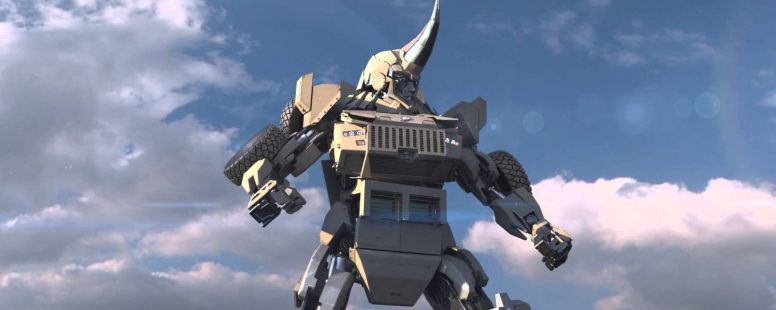A Myriad of New Directions for Environmental Governance
Posted on behalf of Courtney Kehoe, Master’s student at the University of Ottawa
After attending the PE-3C Conference last month in Wageningen (a quaint little town in the Netherlands, some eighty-five kilometers southeast of Amsterdam) I found myself absolutely fascinated by the way environmental governance is being transformed – not just in Southeast Asia, but the world over!
The photo above is just one (albeit extreme) example of this shifting governance landscape presented to conference participants by York University’s Elizabeth (Libby) Lunstrum as she delivered the Conference’s closing keynote address. The Mbombe Parabot – described as ‘a super hero robot developed to showcase Africa’s defense technologies and raise awareness of the plight of Africa’s threatened wildlife populations’[1] – represents the current shift toward green militarization and securitization of conservation in Southern Africa. It is an illustration of the way in which private actors (in this case the African-based global defence and aerospace business Paramount Group) are becoming involved in the governing of environmental goods (i.e., rhinoceros in the Kruger National Park).
Of course there were plenty of other examples of alternative forms of environmental governance discussed over the course of the four-day conference: everything from the waging of ‘green wars’ by environmental non-governmental organizations (ENGOs) to buyer-driven pressure to rid seafood supply chains of environmentally and socially destructive practices. However, I believe the reason Libby’s case resonated with me is because it speaks volumes to the importance of a project like NDEG, and the value of research that seeks to better understand the effects and effectiveness of these new types of governance. After all, it was only by casting a careful and critical eye to the role of these private actors in protecting the rhino that Libby was able to identify the controversy and questionable conservation outcomes; notably, that the killing of poachers, many of whom originate from communities surrounding Kruger National Park, ultimately deteriorates the relationship between the park and people.
Failing to identify these and other sorts of negative consequences can result in the blind replication of a particular governance scheme, which would be neither socially nor environmentally beneficial. Alternatively, recognizing those more harmonious and beneficial schemes could allow for a set of best practices to be identified. As members of the NDEG team (and academics more broadly) advance their current and future research agendas with these objectives in mind, I grow ever confident in the project’s purpose and am certain that we are moving forward in the right direction.

